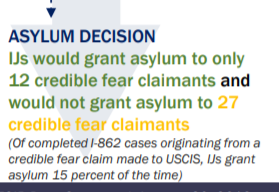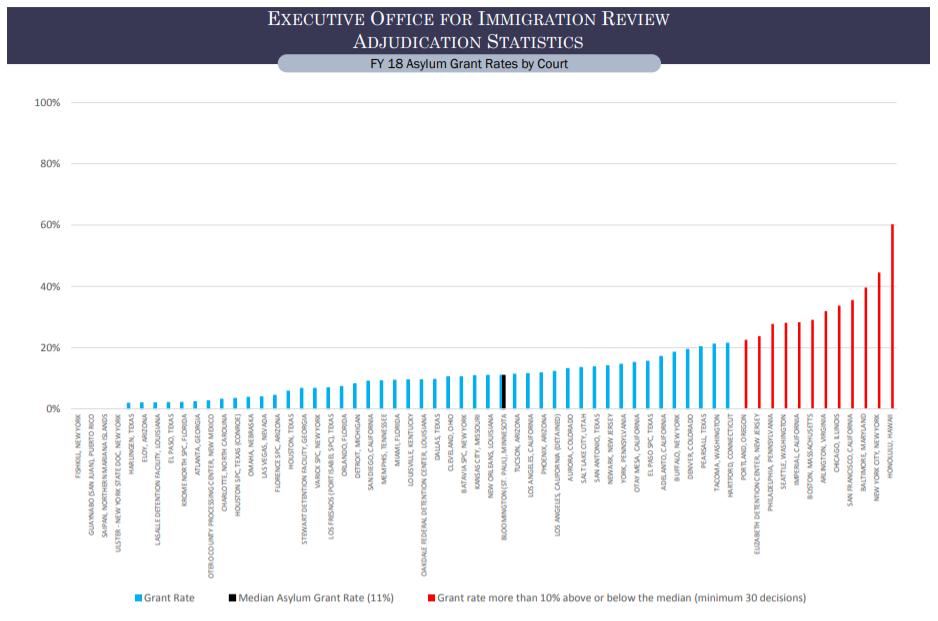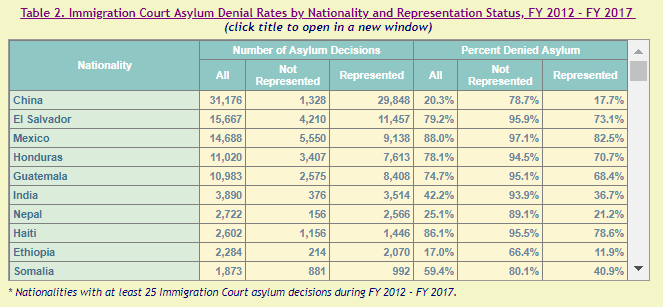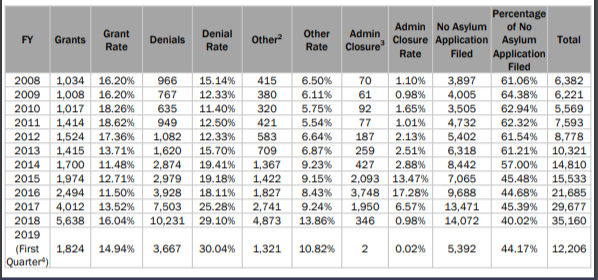Here's why:
The fact doesn't directly address the myth.


This one is particularly bizarre because the existence of disparities in grant rates isn't controversial; in 2008, the GAO issued a report entitled "Significant Variation Existed in Asylum Outcomes across Immigration Courts and Judges." gao.gov/new.items/d089…


In FY 2017, 95.1% of unrepresented Guatemalans lost their asylum case, compared to 68.4% of those with lawyers.
trac.syr.edu/immigration/re…

Our research from @Ingrid_Eagly shows that having a lawyer makes you twice as likely to win your case if you're detained, and five times more likely if you're non-detained. americanimmigrationcouncil.org/research/acces…





















